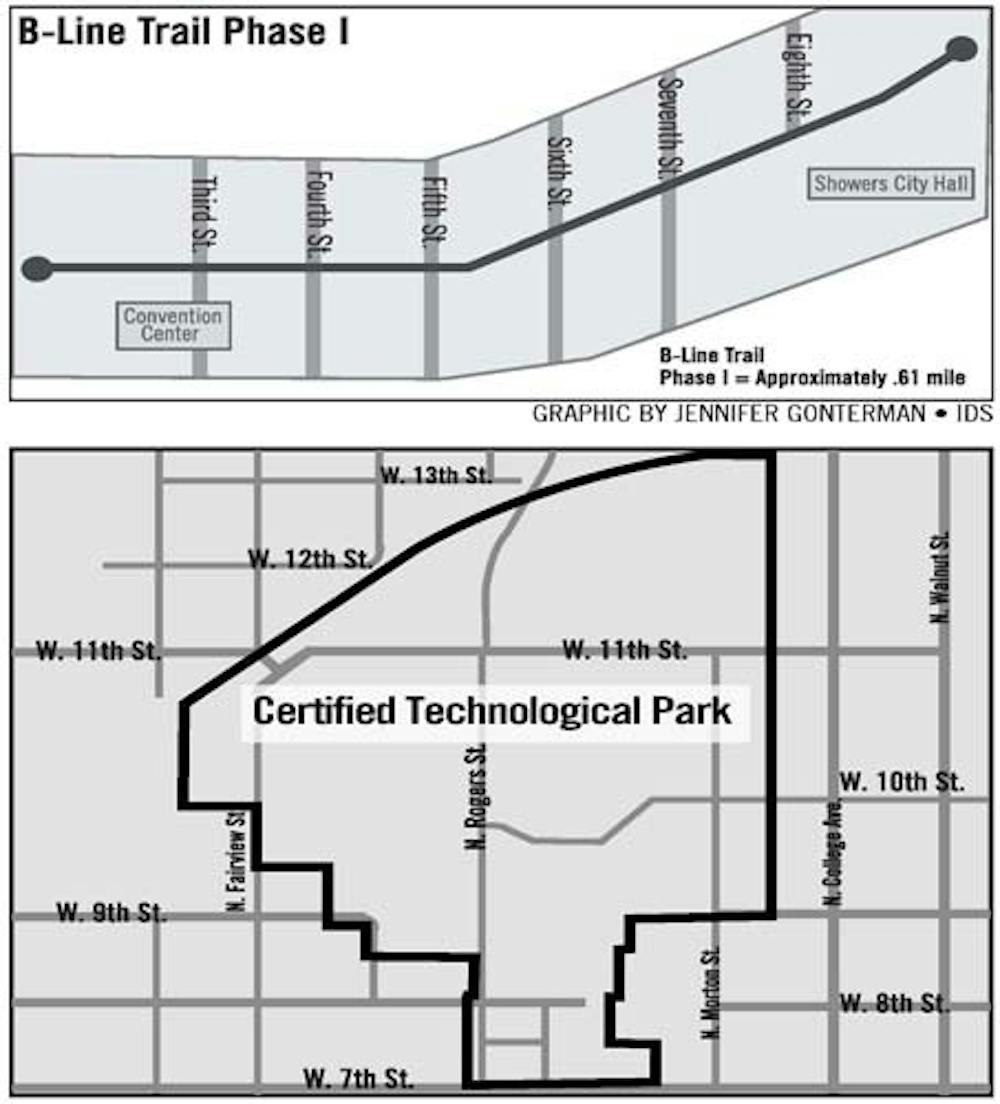Last week’s ground-breaking for a training facility for SpheroSense Technologies Inc. marks another link in the ever-extending chain of new businesses in Bloomington’s life sciences industry.\nThe goal of the facility, located on Bloomington’s southside, will be to train people to conduct research and development activities for the “biosensors” that the company produces. The “biosensor” devices are used in determining chemical levels such as DNA, poison or cell growth existing around living organisms. A goal of SpheroSense is to create hand-held devices that will monitor post-operative and trauma patients in order to detect infection.
Life sciences in Bloomington
SpheroSense Technologies Inc. found its niche the already existing Life Science industries in Bloomington.\nRon Walker, president of the Bloomington Economic Development Corporation, said the major life science industries in Bloomington include, Cook Inc., Cook Pharmacia and Baxter Pharmaceutical Solutions. \nCook Inc. employs more than 2,000 employees and Baxter employs more than 1,000, and both industries are looking to expand their employment base, Walker said.\nWalker said a goal of the Bloomington Economic Development Corporation is to help current companies, such as these, expand. There are many smaller life science industries in Bloomington, Walker said, and all of the life science companies currently need more employees. \n“Pharmaceuticals is the engine for economic growth in the next decade,” he said. \nHelping these industries with their employment issue has become a principle focus for the Bloomington Economic Development Corporation, Walker said. According to a survey conducted by the group, local life science businesses are seeking to create and fill 1,200-1,400 new jobs in Bloomington. \nThe new training center will facilitate this employment goal by giving people the skills necessary to ultimately fill these positions. Walker said those trained at the Bloomington facility will get “preferential hiring.”\nAs for the “brain-drain” – a concern often raised by Gov. Mitch Daniels in which skilled workers trained in Indiana leave the state – Walker is not concerned. \n“It doesn’t worry us too much because these aren’t the primary (workers) to leave,” Walker said.\nIndividuals trained at the Bloomington facility include those with GEDs or just out of high school.
Technology industry
The technology industry is also a focus of the Bloomington Economic Development Corporation for the same reasons as life sciences, but on a smaller scale. \nBecause the fields of technology and science will drive future economic growth, the group is seeking to attract new technological companies and employees to Bloomington. Walker said the challenge is that Bloomington isn’t widely known for life science or technological industries. \n“We want things to be percolating here,” said Walker. “We are trying to feature South Central Indiana and how great it is to live here.”\nMany of the technological companies are small with a small staff. One example is Option Six, which develops e-learning software, such as teaching people Microsoft programs.\n“They fly under the radar,” Walker said.\nAlthough these companies are small, their impact on the Bloomington economy is significant because they have higher wages than larger corporations. They also keep Bloomington a “small town” because they don’t bring a huge flux of employees to the city or the increase in traffic.
Certified technological park
Danise Alano, the director of economic development at the mayor’s office, said the Bloomington Certified Technology Park has the potential to attract new life science and technology businesses to Bloomington.\nThe name, “Certified Technological Park” is misleading, Alano said. \nThis area is not a park per se, but a district in which tax revenue is recycled. Instead of going to the state, the tax revenue from within the district is used in the zone as funding for improving the district, Alano said. \nThe park occupies a 65-acre area, and much of the district is currently undeveloped. Along with the growth of the current businesses in the area, there is opportunity for new ones to come and benefit from the recycled tax concept, Alano said.\n“Technology businesses like to be in a cluster,” Alano said.\nCurrently proposals are being considered by developers to increase housing in this area, Alano said. IU also owns a portion of the land in the Certified Technology Park and may sell or develop it in the near future.\nAlano said the mayor’s office is working closely with the Bloomington Economic Development Corporation to make the area attractive to more life science companies. The group hopes to build a laboratory in the district with all the amenities a potential life sciences occupant could use, she said. Walker said Companies will be inclined to move to this area if a lab already exists.\nAlano said that the B-Line urban recreational trail, another economic development project that will soon be underway. It would run through the Certified Technology Park and hopes are that it will attract leisure businesses to this area as well.\n“Having a healthy business community helps to have an overall healthy community,” Alano said.






